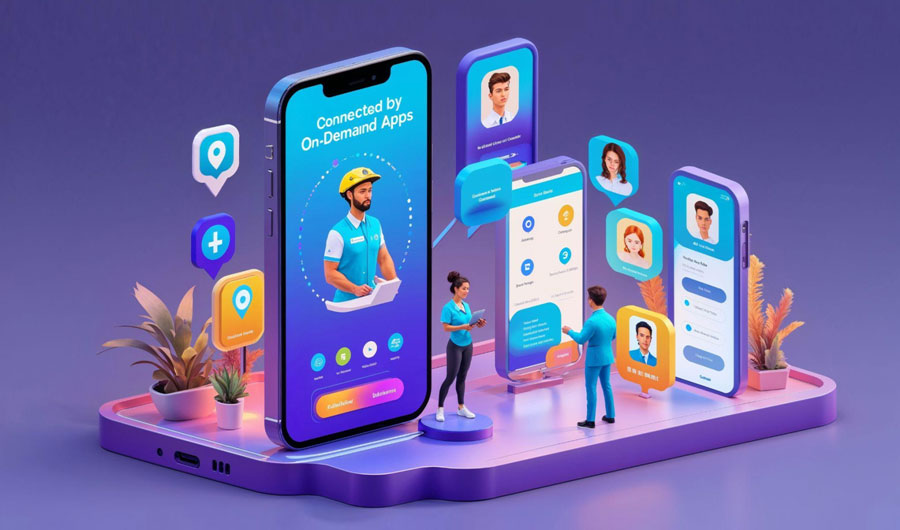
Essential UI/UX Courses for Aspiring Designers For 2024
In today’s digital age, the importance of user interface (UI) and user experience (UX) design can hardly be overstated. Websites, apps, and digital services have become the primary means through which businesses interact with their customers. As such, delivering an intuitive, engaging, and visually appealing digital experience is paramount. This has led to a booming demand for skilled UI/UX designers. But where do you start if you’re aspiring to enter this vibrant field? The answer lies in education, specifically through courses designed to equip you with the necessary skills and knowledge. Here’s a curated list of essential UI/UX courses tailored for aspiring student designers.
The Role of UI/UX in Design
Why do we even need to focus on UI/UX? Imagine you’re at a large, unfamiliar train station looking for your platform. Signs, maps, and information desks are your UI; the ease with which you find your platform is your UX. In the digital world, understanding the user is like knowing every traveler’s needs—where they’re confused, what they’re looking for, and how they feel. By putting the user at the heart of UI/UX design, we create digital spaces that are not only functional but also welcoming and easy to navigate.
UI/UX and Brand Identity
Think of your favorite brand. Now, imagine if every time you interacted with it online, you faced confusion and frustration. Hard to remain a fan, right? This is where UI/UX steps in as a critical component of brand identity. It translates a brand’s essence into a digital format, ensuring that users feel the same values and personality through screens as they would in any other interaction with the brand. Consistent, positive interactions build trust and loyalty, which are gold for any brand
The Role of UI/UX in Product Development
In the journey of product development, UI/UX design is not just a checkpoint but a guiding star. It starts with understanding the problem a product aims to solve and the people facing that problem. From there, design thinking takes the lead, iterating through solutions until the product feels like a second nature to its users. This user-centered approach ensures that the product not only solves a problem but also fits seamlessly into the user’s life.
The Digital Revolution: A Brand-New Area for Design
The digital age has changed the way design is done in big ways. Computer-aided design (CAD) software has given artists more freedom than ever before to try new things, make changes, and bring complex ideas to life quickly and accurately. The digital change has opened up design to more people, making it easier for them to get involved and encouraging a culture of teamwork and new ideas. In general, the history of Design reforms is very rich in important events that changed the industry. European reforms and many other reforms in the world that little by little contributed to our future, you can explore it in more detail in the EU Design Reform notes on the EduBirdie platform.
As worries about the environment grow, sustainability has become one of the most important things to think about when designing. The move toward eco-friendly materials, production methods that use less energy, and goods that can be recycled shows that everyone is committed to making design processes less harmful to the environment. The green revolution is changing many fields,
The Evolving Landscape of Design: Embracing Diversity and Inclusivity
The design world is increasingly recognizing the value of diversity and inclusivity. By incorporating a wider range of perspectives, experiences, and cultural backgrounds, designers are creating more empathetic and universally accessible products and spaces. This shift towards inclusivity not only enriches the design process but also ensures that design outcomes resonate with a broader spectrum of the global population.
Understanding the Basics: Introduction to UI/UX Design
- Coursera: “UI / UX Design Specialization”
- Offered by the California Institute of the Arts, this specialization provides a comprehensive introduction to the world of UI/UX design. It covers the foundational principles of design, how to create user personas, design heuristics, and the process of prototyping and testing. This course is perfect for beginners with little to no background in design.
- Udemy: “User Experience Design Essentials – Adobe XD UI UX Design”
- Adobe XD is a powerful tool for UI/UX designers, and this course is designed to get you up and running with it. You’ll learn how to design websites and mobile apps from scratch, understand user flows and wireframes, and how to apply visual design principles to your prototypes. The hands-on approach of this course makes it ideal for those who learn best by doing.
Diving Deeper: Intermediate Courses
Interaction Design Foundation (IDF): “User Experience: The Beginner’s Guide”
Once you have grasped the basics, it’s time to dive deeper. This course from IDF covers a wide range of topics, from usability principles to designing for emotion and flow. It combines theoretical knowledge with practical assignments, ensuring you can apply what you learn in real-world scenarios.
LinkedIn Learning: “UX Foundations: Prototyping”
Prototyping is a critical skill in the UX design process, allowing designers to test and refine their ideas. This course provides a solid foundation in prototyping, covering various tools and techniques. By the end of the course, you’ll be able to create both low-fidelity and high-fidelity prototypes to test your design concepts.
Nielsen Norman Group: “UX Master Certification”
For those looking to take their skills to the next level, the UX Master Certification program by the Nielsen Norman Group is a must. This program requires completion of a set series of courses followed by an exam. Topics covered include advanced usability testing, interaction design, and visual design. It’s a rigorous program but one that will significantly elevate your design credentials.
General Assembly: “User Experience Design Immersive”
This immersive course is designed to transform beginners into job-ready designers in a matter of months. It covers the entire design process, from research and ideation to prototyping and testing. The course also includes career coaching and portfolio development, making it a comprehensive choice for those serious about a career in UI/UX design.
Embarking on a career in UI/UX design is an exciting journey filled with endless possibilities. The courses outlined above represent just the tip of the iceberg but are essential stepping stones towards mastering the craft of UI/UX design. Remember, the field of UI/UX is ever-evolving, so continuous learning and adaptation are key. Whether you’re just starting out or looking to refine your skills, these courses will provide the knowledge, practical skills, and insights needed to succeed in this dynamic field. Happy learning!






